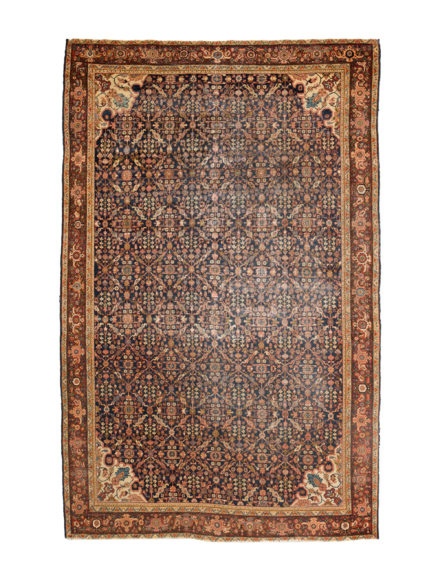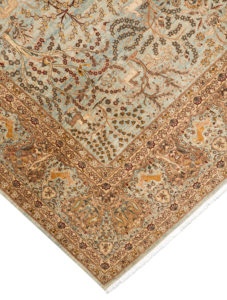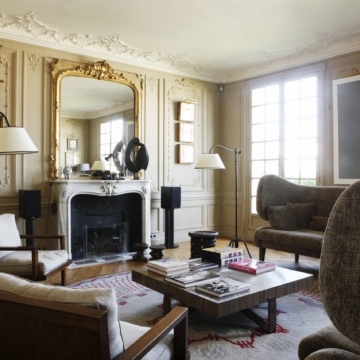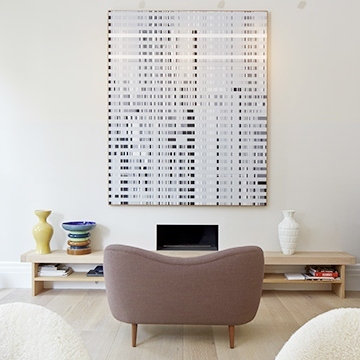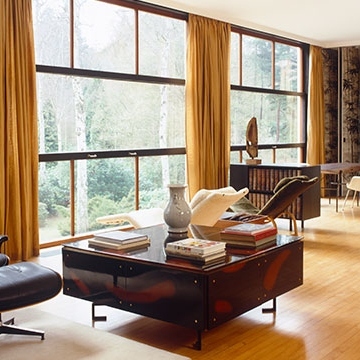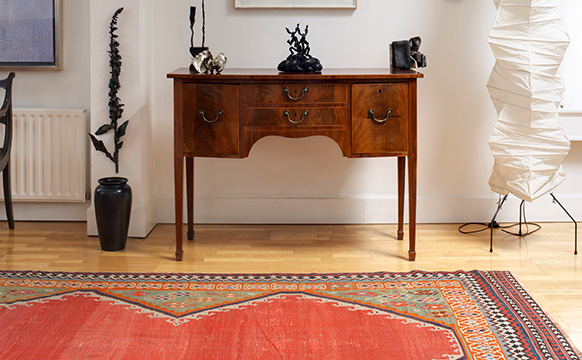
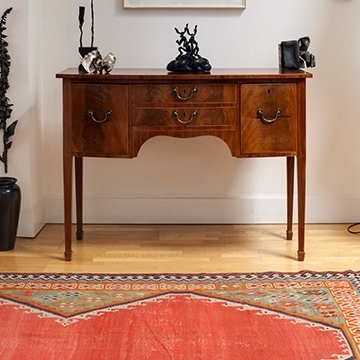
How to Buy a Rug: 5 Expert Tips for Your Next Big Home Purchase
A great rug brings a room together. It adds warmth, protects delicate flooring, softens echoes and footsteps, and makes a room more inviting all around. But with an overwhelming range of sizes, materials and price points, how do you know which rug is the right choice for you? We asked our resident expert, Fine Art and Home Curator, Brittany Gersh, to give us her top five tips on how to purchase the perfect rug for your space.
1. Consider The Size
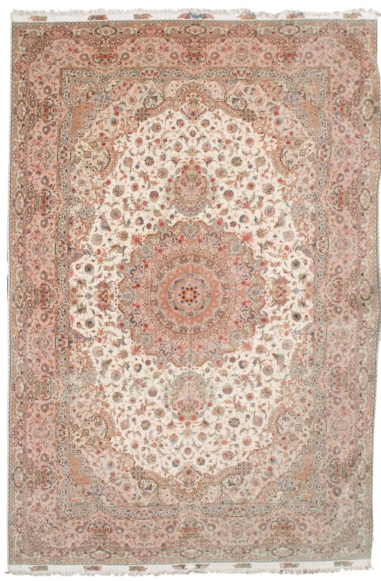
“The first thing you should think about when buying a rug is the size,” advises Gersh. “Choosing a rug that’s too small for the space is a common design mistake, but one that’s easy to avoid.” Whether you want a small rug positioned in the center of the room, or a runner that fills up an entire hallway, make sure to consider how much space you want covered versus how much bare floor will be exposed. “For each piece of furniture, at least one leg should overlap on the rug,” says Gersh. “My favorite look is layered rugs, with multiple smaller carpets overlapping, which can also be a great way to save money.”
2. Establish Your Budget
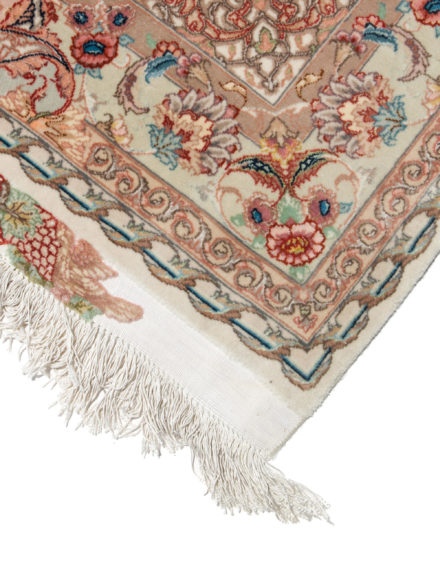
“Rugs can range from $100 to $200,000, and knowing what your budget is will narrow down the possibilities,” says Gersh. What exactly contributes to this significant range in cost? “Some of it has to do with the quality of the rug and where it was made.” With antique rugs, for example, the provenance is interesting and important, but perhaps even more impressive is the care and manpower that went into making an older piece, which is often so much greater than with a brand new rug. A hand-knotted carpet can take several months to create while a machine-made rug is finished within minutes.
“Whether the foundation [the warp and weft into which the design is woven] of a carpet is wool, cotton or silk will also affect the price,” Gersh explains. “Silk-foundation carpets are more expensive for the same reason a silk top would be more than cotton. The material is not only softer, but more durable, too.”
3. Decide Between Pile or Flatweave
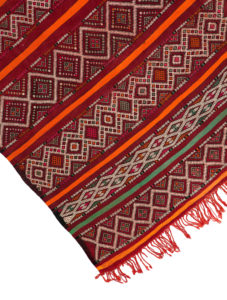 Wool Pile Isfahan Rug, $6,750; Moroccan Flatweave Rug, $400
Wool Pile Isfahan Rug, $6,750; Moroccan Flatweave Rug, $400
“Pile is knotted wool or silk that has been cut so that you’re walking on a softer surface. With flatweave rugs, you’re stepping on the side of a fiber instead of the soft, cushy, cut top of the fiber,” explains Gersh. “By nature, flatweave designs can’t be as intricate. They have a more rustic feel and they’re not quite as soft.” But besides the feel, another thing to consider when picking a style is the room’s purpose. Flatweave rugs work well for dining rooms and children’s playrooms where furniture is often slid around, while pile is great for high-traffic areas like living rooms where feet can enjoy a plush, silky carpet.
4. Determine The Quality
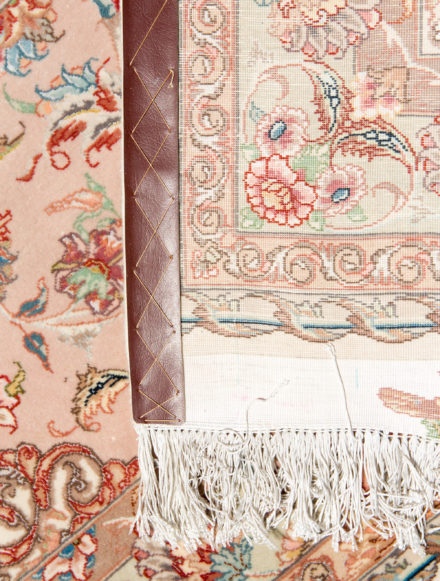
When it comes to rugs, Persian and Turkish are the gold standard, but replicas abound. Unlike a Chanel bag, with rugs, there are no designer hallmarks or serial codes, so determining a rug’s authenticity is much more about the quality of the construction. “You can look at the back of the rug to see if it’s well-constructed and will hold up over time,” says Gersh. Tighter knots will result in a softer pile with a stronger foundation so the rug won’t wear as easily.
“The better the construction, the longer it will last,” says Gersh. “It’s the same idea as Ikea — you can get an Ikea desk and it might last 10 years, or you can go with a Brooklyn furniture designer making everything with sustainable walnut. They might look identical, and maybe disposable works for your purposes, but if you’re going to spend any money, it’s my philosophy that if you buy expendable carpets or furniture, you’re throwing money away.” On the other hand, if you buy something that stands the test of time, you can resell it and swap it out for a different style in the future, or hold onto it and pass it down to your kids.
5. Buy Resale For Maximum Value
